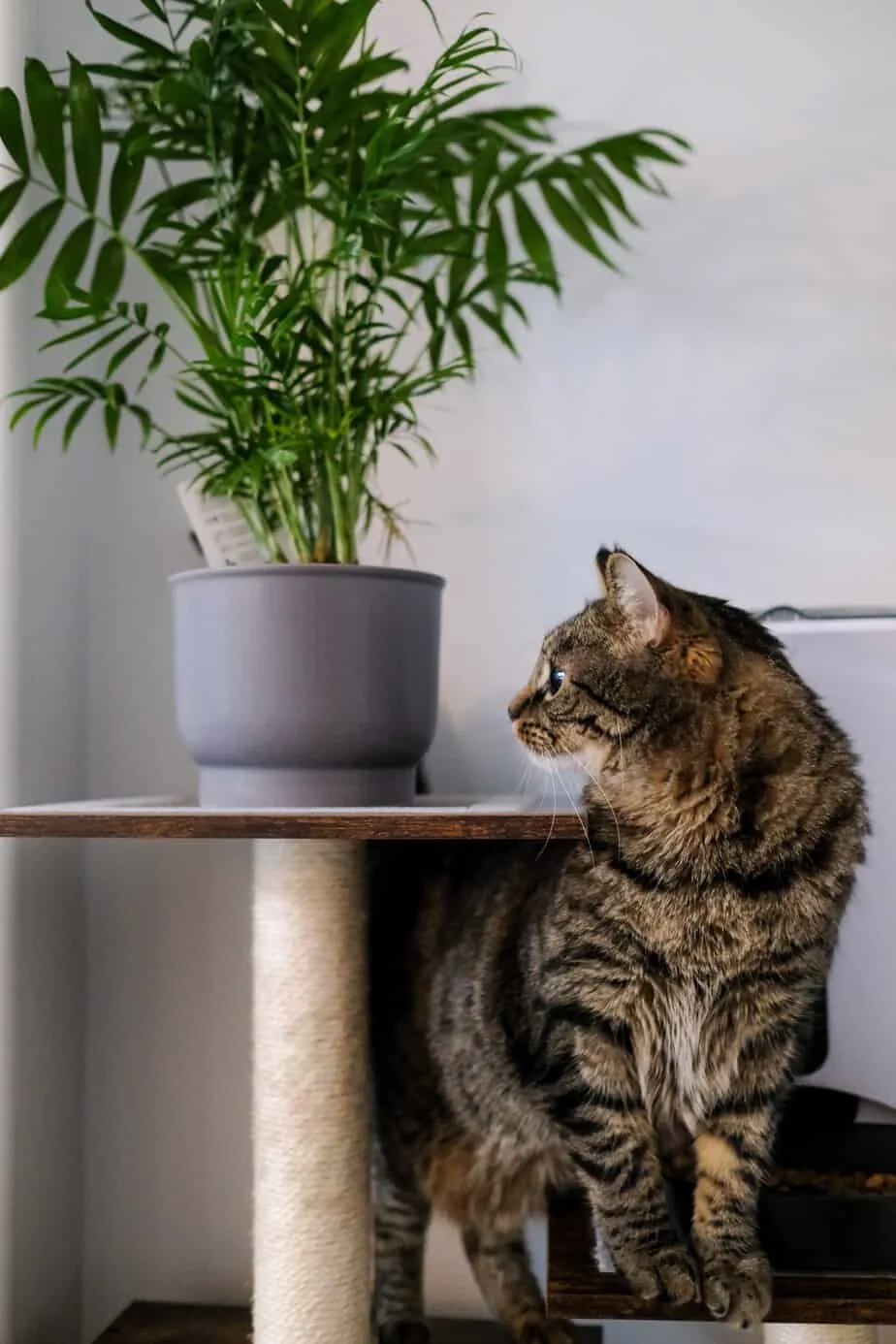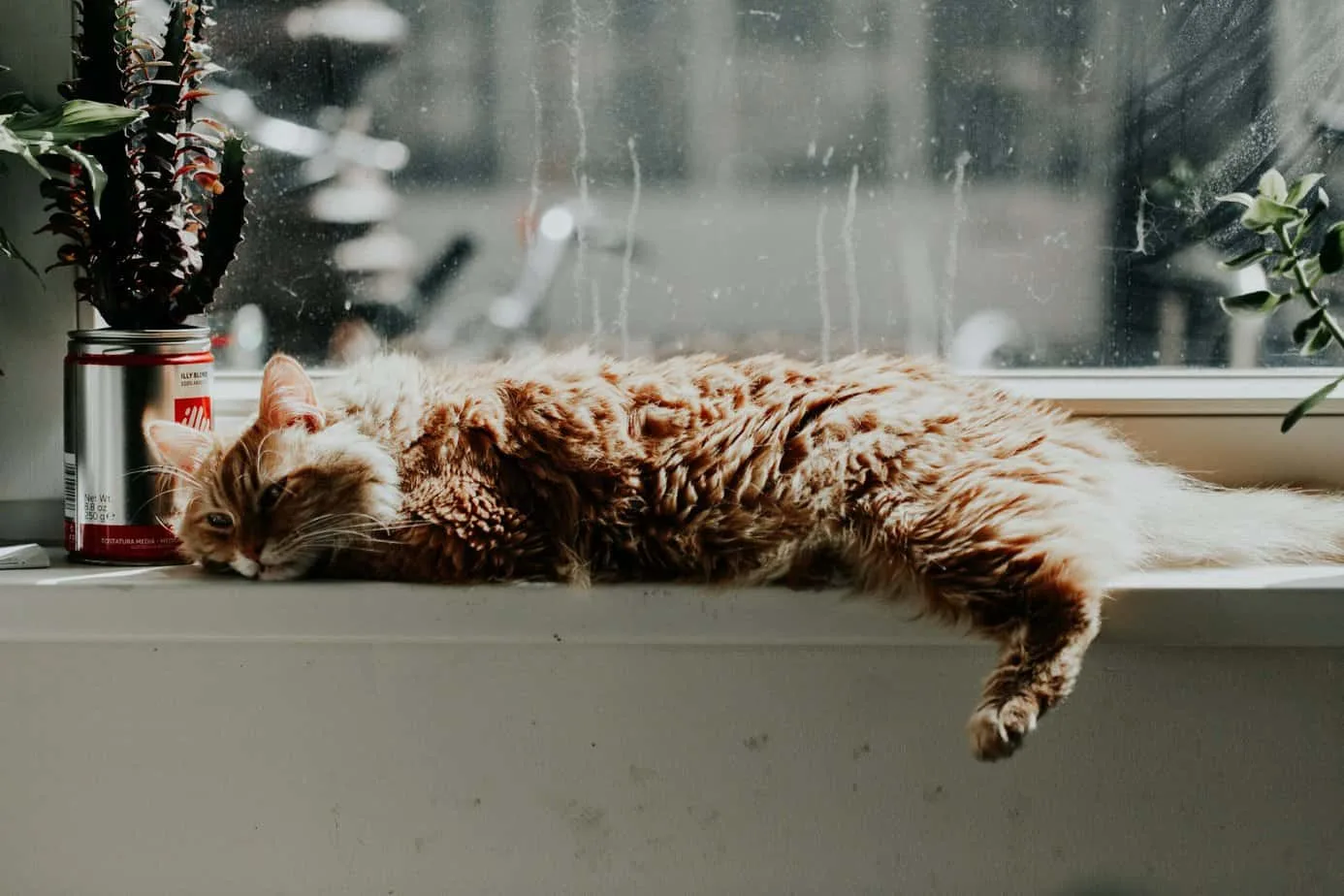Indoor Plants Safe for Cats: A Cat-Friendly Green Space
Ever watched your cat playfully swatting at the leaves of your houseplants or maybe even taking a nibble? While it's an adorable sight, ensuring the greenery around your home is safe for your feline friends is crucial. Not all indoor plants are cat friendly, but fear not, plant and pet lovers; plenty of beautiful and safe options exist.

Photo by Vlad D on Unsplash
Cats are notorious for getting into mischief, and if you’re a plant and cat lover, you can expect your furry friend to investigate your houseplants. Whether your cat likes to chew on the leaves or dig in the dirt, you should just resign yourself to the fact that Kitty will be nosey enough to check out your plants.
Many plants are poisonous to cats, but the good news is that many aren’t. Some plants are fine to be nibbled on without causing any harm to your cat.

The Green List: Cat-Safe Indoor Plants
Choosing plants that are nontoxic to cats can be a bit of a challenge, but here's a handy list to make your choice easier:
- Spider plant: This easy-to-care-for plant has long, arching leaves that can provide hours of entertainment for cats without any risk.
- Areca palm: Also known as the butterfly palm, this plant adds a tropical touch to your home and is completely safe for your kitty.
- Boston fern: Ferns are great nontoxic plants, and the Boston fern, with delicate, feather-like leaves, is especially cat-friendly.
- Parlor palm: The parlor palm is safe for cats and adds a touch of elegance to any room with its lush green leaves.
- Swedish ivy: With its cascading vines, the Swedish ivy is a beautiful addition to any cat-friendly household.
- Bamboo: Not only does bamboo create a striking visual, but it's also safe for cats to interact with. Note: This doesn’t include lucky bamboo, which is toxic to cats.
- Christmas cactus: Despite its prickly name, the Christmas cactus is nontoxic and quite safe for cats.
Remember, even though these plants are nontoxic, excessive plant and herb eating can lead to minor digestive issues in cats. Always encourage your furry friend to stick to their regular diet.
“Because our cats view our indoor plants as their own private jungle, we make sure that we only have cat-safe plants like parlor palms, spider plants, and prayer plants in our home."
— Sage Scott, Everyday Wanderer
Plants toxic to cats
Here's a list of some common indoor plants that are known to be toxic to cats:
- Amaryllis: This plant can cause drooling, loss of appetite, vomiting and tremors in cats.
- Dieffenbachia (dumb cane): Eating this plant can cause oral irritation, excessive drooling and difficulty swallowing.
- Lilies: Many types of lilies, such as tiger, day, Asiatic, Easter and Japanese show lilies, can cause kidney failure in cats.
- Sago palm: All parts of this plant are poisonous to cats, but the seeds are the most toxic.
- Tulips: The bulb is the most poisonous part, but all parts of the plant can cause drooling, loss of appetite, depression and convulsions.
- Azalea: Even ingesting a few leaves can result in vomiting, diarrhea and excessive drooling.
- Cyclamen: The roots of this plant can cause severe vomiting and even lead to death.
- Kalanchoe: This plant can cause vomiting, diarrhea and heart arrhythmias.
- Oleander: All parts of this plant are toxic and can cause colic, diarrhea, sweating and possibly even heart failure.
- English ivy: It can result in drooling, vomiting, diarrhea and in severe cases, dilated pupils or difficulty breathing.
- Dracaena: These plants can cause vomiting (occasionally with blood), depression, loss of appetite and increased salivation in cats.
- Jade plant (erassula ovata): This popular succulent can cause vomiting, depression and a lack of coordination.
- Pothos or devil's ivy (epipremnum aureum): Chewing or biting into this plant will release crystals causing tissue penetration and irritation around the mouth, tongue and lips.
Oh no, Kitty ate a toxic plant — now what?
Despite your best efforts, there might be times when your curious cat gets into a plant or garden that isn't safe. If that happens, it's crucial to act quickly.
- Identify the plant. First, identify the plant that your cat has ingested. It's helpful to keep a list or photos of your household plants to assist the vet in diagnosis and treatment.
- Monitor symptoms. Watch out for any symptoms of plant poisoning. These might include vomiting, diarrhea, drooling, loss of appetite or changes in behavior.
- Contact your vet. Contact your veterinarian immediately and let them know what happened and what plant — and how much of the plant — the cat ate. They might instruct you to bring in your cat, the plant, or both. In any case, immediate action can be critical.
Remember, the best course of action is prevention. Keep potentially harmful plants out of your cat's reach, or better yet, out of your home entirely.
“When it comes to plants, always do a check to see if they are toxic for cats before you bring them into your home. While my current cat has zero interest in them, every other cat I've ever known would jump onto any surface to nibble on any fresh plants or flowers we brought into the house. So many common plants are toxic to cats; contact your vet immediately if your cat accidentally ingests anything from a toxic plant.”
— Michelle Price, Honest and Truly
read about this automatic litter box
Keeping your cat away from plants
Even with cat-safe plants, it's best to discourage feline foliage frolicking. Here are some tips on keeping your cat and plants separately happy:
- Use plant stands: Cats love climbing, but they may think twice if the plant is on a high, wobbly stand.
- Use citrus scents: Cats typically dislike citrus. Spraying your plants lightly with citrus-scented water can keep your cat at bay.
- Provide cat grass: Cat grass can provide a safe and appealing plant snack for your cat, drawing them away from your indoor plants.
- Train your cat: With a bit of patience, you can train your cat to avoid plants. Whenever you notice them getting too close, a gentle "no" and redirection can do wonders.
Living with both cats and indoor plants can be a harmonious experience. Just remember, safety first. With a bit of research, a dash of prevention and a heap of love, you can create a feline-friendly green space that you and your kitty will enjoy. So, go ahead, and make your home a cat-safe jungle.
Jenn Allen is a retired chef turned cookbook author, blogger, and traveler. She lives at home with her family and the cats that rule them all. Sign up for all her best recipes at CookWhatYouLove.com
This article first appeared on Food Drink Life.
